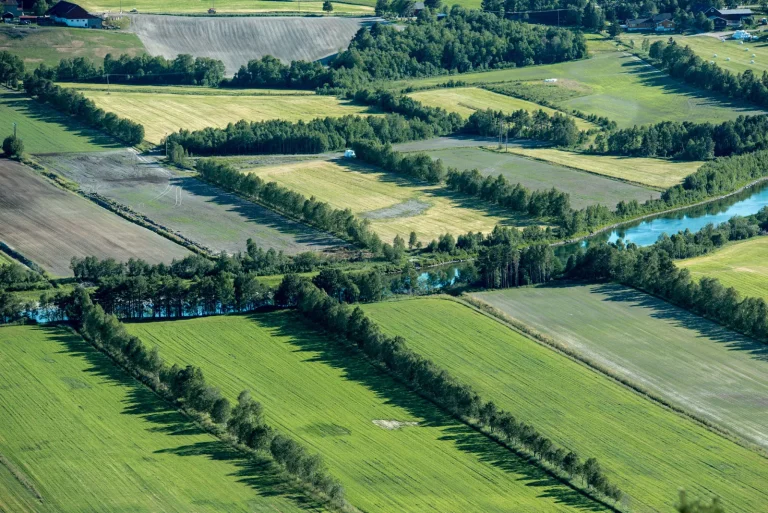
Farming in rural areas often exposes your land to harsh winds. Establishing windbreaks is vital to shield your property from wind damage and to protect your crops and livestock. These protective barriers can also reduce heating costs during winter and minimize snow drifts, ensuring even coverage to insulate winter crops effectively.If you farm in a rural area exposed to strong winds, planting windbreaks for farms is essential for protecting your land. These natural barriers effectively mitigate the impact of winter winds and blowing snow, which can cause damage to your property and increase heating costs. Additionally, windbreaks play a vital role in preventing soil erosion and maintaining soil health, which promotes healthier crop growth. By strategically placing these protective barriers, you can ensure that winter crops receive the insulation they need against harsh conditions while enhancing the overall resilience of your farming operations.
The Benefits of Windbreaks
Wind and snow during winter can lead to discomfort and financial strain on farmers. Summer winds can deplete topsoil and hinder plant growth. By creating a windbreak, you not only guard against these elements but also introduce shade, enhance your property’s visual appeal, and provide a habitat for local wildlife. Additionally, windbreaks can buffer noise and unpleasant odors from nearby areas, offering added privacy.
How Windbreaks Function
Windbreaks act as barriers that help deflect or redirect wind away from your fields and buildings. They can be natural landscapes or constructed features. The most efficient windbreaks consist of densely planted rows of trees and shrubs.
When wind encounters a well-designed windbreak, it is forced upwards and over the top, redirecting the airflow away from the areas you want to protect. The overall height and length of the windbreak determine how much area benefits from its protection.
The density of the windbreak is crucial for its effectiveness. A tightly packed arrangement of trees and shrubs offers a formidable barrier. To work optimally, windbreaks should be planted in continuous rows without gaps, and access points for vehicles should be located away from these barriers.
Choosing the Right Plants for Windbreaks
Selecting a variety of tree and shrub species is essential when designing a windbreak. The choice should reflect the local environment, and specific species can be chosen for their wildlife-attracting qualities. Consulting local forestry experts or extension services can provide valuable insights.
An effective windbreak should extend protection approximately 8 to 10 times its height. Most evergreen trees grow between 40 to 80 feet, making them excellent choices for providing the necessary height. Species such as oak or hackberry can also contribute height in multi-row setups, provided they have adequate space away from roads, utility lines, and structures.
Using conifers like cedars and pines, along with multi-stemmed shrubs, will ensure the windbreak maintains good density year-round.
Designing Effective Windbreaks
To maximize protection, position your windbreak according to the prevailing winds, typically from the northwest. Keep it at least 50 feet away from roads and buildings.
“Two-legged” windbreaks, placed on the north and west sides of the property, are common in flat landscapes. These configurations are particularly useful in northern areas with significant snowfall.
Implementing Staggered Planting
A well-structured windbreak should feature at least three rows of mixed trees and shrubs to provide adequate wind and snow protection. The outer rows facing the wind should consist of shade-tolerant conifers or multi-stemmed shrubs to capture snow. Taller trees should form the inner row to redirect the wind, while smaller evergreens or shrubs should fill the leeward row for both density and aesthetic appeal.
Maintain 10-15 feet between rows to allow for growth and access for maintenance. The spacing between individual plants will vary by species but should be at least 14 feet. For quicker results, consider planting closer and later thinning as necessary, potentially using them as holiday trees during the interim. Staggering the plantings across rows helps eliminate gaps.
For effective windbreaks, the barrier should extend the length of the area needing protection, plus an additional 100 feet (50 feet at each end) to account for wind eddies that form around the edges.
Additional Tips for Windbreak Design
Here are some helpful suggestions for planting and designing your windbreak:
- Avoid planting evergreens on the south side of buildings if you wish to benefit from passive solar heating during winter.
- Besides the primary windbreak, consider foundation plantings to help insulate buildings. Leave adequate space based on the mature size of the plants and the drip line of the roof.
- Manage invasive weeds and vines that can drain moisture and nutrients from your windbreak. Clear weeds before planting and apply a layer of mulch to retain moisture, ensuring it doesn’t contact the tree trunks.
- Ensure your windbreak plants receive enough water, especially during dry spells.
The Role of Drip Irrigation
During dry periods, trees and shrubs require irrigation, particularly as they establish after planting. Drip irrigation systems are the most efficient method for watering, ideally installed during the planting process. These systems use less labor and significantly reduce water consumption compared to traditional sprinklers or surface irrigation methods. They also minimize the risk of soil-borne organisms splashing onto plant foliage, which can cause disease.
Investing in windbreaks will not only improve your living conditions but also enhance crop yields, promote animal welfare, and lower overall farming costs.
Source: Guide To Plant A Windbreaker


